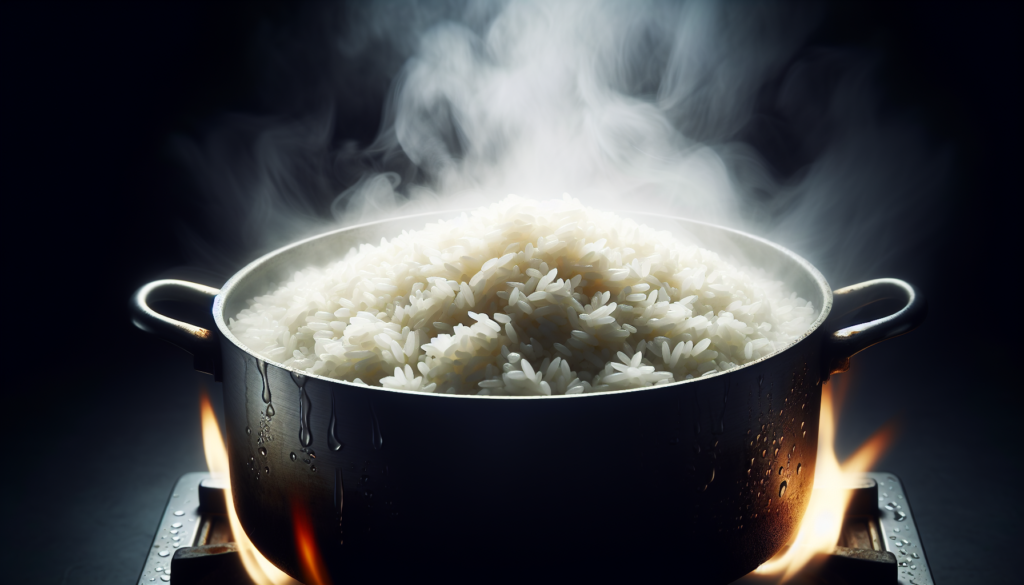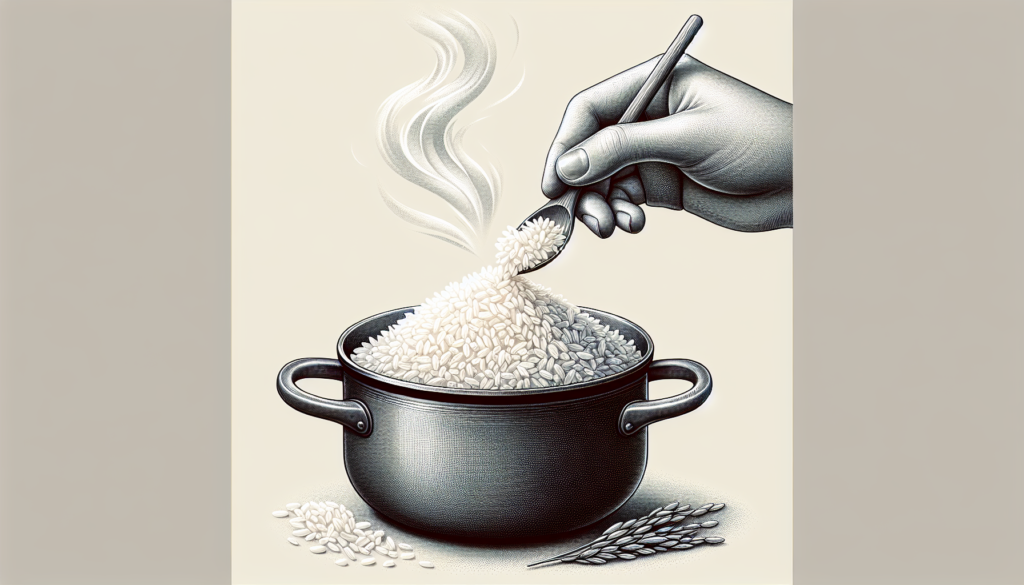Ever wondered how long it should take to cook rice to perfection? Look no further for the answer to this common kitchen conundrum. Whether you prefer fluffy basmati or sticky sushi rice, the cooking time can vary depending on several factors. From the type of rice you choose to the method of cooking, we will explore the ideal cooking times to achieve that perfectly tender and flavorful bowl of rice, leaving you with no more guesses or kitchen disasters. So, let’s dive into the rice-cooking world and discover the secrets to achieving rice perfection in no time!
Factors Affecting Cooking Time
Cooking rice may seem like a simple task, but there are several factors that can affect the cooking time and overall outcome of your rice dish. By understanding these factors, you can ensure that your rice turns out perfectly cooked every time.
Type of Rice
The type of rice you choose to cook plays a significant role in determining the cooking time. Different types of rice have varying levels of starch and moisture content, which can affect how long it takes to cook. Some common types of rice include white rice, brown rice, basmati rice, jasmine rice, and arborio rice.
Quality of Rice
The quality of the rice you use can also affect the cooking time. Higher quality rice tends to cook more evenly and may require less time on the stove or in the rice cooker. On the other hand, lower quality or old rice may take longer to cook and may not turn out as fluffy and tender.
Cooking Method
The cooking method you choose can significantly impact the cooking time of rice. The three most common cooking methods for rice are the stovetop method, rice cooker method, and microwave method. Each method has its own set of instructions and cooking times, so it’s essential to follow the recommendations for your chosen method.
Altitude
Believe it or not, altitude can affect the cooking time of rice. At higher altitudes, where the air pressure is lower, water boils at a lower temperature. This means that it will take longer for the rice to cook since it will be cooking at a lower temperature. If you are cooking rice at a higher altitude, you may need to adjust the cooking time accordingly.
Types of Rice and Their Cooking Times
Different types of rice have different cooking times due to their varying starch content and moisture levels. Here are some popular types of rice and their estimated cooking times:
White Rice
White rice, which is the most commonly consumed type of rice, typically cooks relatively quickly. On average, it takes about 15-20 minutes to cook white rice on the stovetop. This cooking time may vary depending on the specific brand of rice and the cooking method used.
Brown Rice
Brown rice takes longer to cook compared to white rice because it still has the bran and germ intact. On average, it takes about 40-50 minutes to cook brown rice on the stovetop. However, some varieties of brown rice may take longer, so it’s essential to check the package instructions for specific cooking times.
Basmati Rice
Basmati rice, known for its distinctive fragrance and flavor, typically cooks in about 15-20 minutes on the stovetop. This long-grain rice is popular in Indian and Middle Eastern cuisine and is known for its fluffy and separate texture when cooked properly.
Jasmine Rice
Jasmine rice has a slightly sticky texture and a delicate aroma. It typically takes about 15-20 minutes to cook jasmine rice on the stovetop. This fragrant rice is commonly used in Southeast Asian dishes and pairs well with curries and stir-fries.
Arborio Rice
Arborio rice is a short-grain rice known for its high starch content, which gives risotto its creamy texture. It takes approximately 20-25 minutes to cook Arborio rice on the stovetop. This rice requires frequent stirring to release the starch gradually and create the desired creaminess.

Methods for Cooking Rice
There are several methods for cooking rice, each with its advantages and disadvantages. Here are three commonly used methods:
Stovetop Method
The stovetop method is the most traditional way of cooking rice. To cook rice on the stovetop, you will need a saucepan with a tight-fitting lid. Start by rinsing the rice to remove excess starch, then add the appropriate amount of water according to the ratio specified on the rice package. Once the water is boiling, reduce the heat to low, cover the pot, and let the rice simmer until all the water is absorbed and the rice is tender.
Rice Cooker Method
Rice cookers are a popular and convenient option for cooking rice. To use a rice cooker, simply add rinsed rice and the correct amount of water to the cooker and select the appropriate cooking setting. The rice cooker will automatically adjust the cooking time and temperature, ensuring consistently cooked rice every time. Rice cookers are especially useful for those who cook rice frequently or prefer hands-off cooking.
Microwave Method
Cooking rice in the microwave is a quick and simple method that can be convenient when you’re short on time. To cook rice in the microwave, add the rinsed rice and the appropriate amount of water to a microwave-safe dish. Cover the dish with microwave-safe plastic wrap or a microwave-safe lid and cook on high power for a specified time, stirring once halfway through the cooking process. Keep in mind that cooking times may vary depending on the wattage of your microwave, so it’s best to follow the instructions provided.
Determining When Rice is Cooked
Knowing when your rice is perfectly cooked is key to achieving the desired texture and flavor. Here are some indicators to help you determine when your rice is ready:
Grain Appearance
One way to tell if rice is cooked is by examining the appearance of the grains. For most types of rice, the grains should be plump, tender, and separate. If the grains are still hard and uncooked in the center or if they are mushy and overcooked, you may need to adjust the cooking time for future batches.
Texture
Texture is another essential aspect to consider when determining if your rice is cooked. Ideally, cooked rice should be tender but still have a slight bite or chewiness. The texture may vary slightly depending on the type of rice and personal preference, but it should not be overly mushy or hard.
Taste Test
Perhaps the most reliable way to check if your rice is done is by conducting a taste test. Take a small sample of the rice and taste it to ensure that it is cooked to your preference. If the rice is still crunchy or undercooked, continue cooking for a few more minutes. Conversely, if the rice is too soft or overcooked, adjust the cooking time for future reference.

Common Mistakes in Cooking Rice
Even though cooking rice may appear straightforward, it’s easy to make mistakes that can affect the final result. Here are some common mistakes to avoid:
Using the Wrong Ratio of Rice to Water
One of the most crucial aspects of cooking rice is using the correct ratio of rice to water. Different types of rice require different ratios, so it’s essential to follow the instructions on the rice package or recipe. Using too little water can result in undercooked rice, while using too much water can make it mushy.
Cooking at the Wrong Temperature
Cooking rice at the wrong temperature can impact its texture and cooking time. When using the stovetop method, it’s important to bring the water to a boil over high heat and then reduce the heat to low to let the rice simmer. Cooking the rice at too high a temperature can cause it to cook unevenly or burn, while cooking at too low a temperature can result in undercooked rice.
Opening the Lid too Soon
Resist the temptation to peek under the lid while the rice is cooking. Opening the lid too soon can release steam and heat, disrupting the cooking process. It’s crucial to keep the lid on until the recommended cooking time has elapsed to ensure that the rice cooks evenly and absorbs the necessary moisture.
Not Allowing for Resting Time
After the rice has finished cooking, it’s important to let it rest off the heat for a few minutes before fluffing it with a fork. During this resting time, the residual heat continues to cook the rice and allows any excess moisture to evaporate, resulting in fluffy, perfectly cooked rice.
FAQs
Why does my rice turn out mushy?
Mushy rice is often a result of using too much water or overcooking the rice. To avoid mushy rice, make sure to use the proper rice-to-water ratio and cook the rice for the recommended amount of time. It can also help to rinse the rice before cooking to remove excess starch.
How do I prevent rice from sticking to the pot?
To prevent rice from sticking to the pot, make sure to rinse the rice before cooking to remove excess starch. Additionally, using a non-stick pot or adding a small amount of oil or butter to the cooking water can help prevent sticking.
Can I cook different types of rice together?
While it is technically possible to cook different types of rice together, it is generally not recommended. Different types of rice have different cooking times and water requirements, which can result in unevenly cooked rice if combined. It’s best to cook each type of rice separately for the best results.
Is it okay to rinse rice before cooking?
Rinsing rice before cooking is generally recommended, as it helps remove excess starch and can result in fluffier rice. However, some types of rice, such as Arborio rice for risotto, may require the starch to create a creamy texture, so it’s essential to follow the package instructions for rinsing recommendations.
Does the cooking time change for different quantities of rice?
The cooking time for rice does not necessarily change based on the quantity being cooked. However, larger quantities of rice may take slightly longer to cook due to the additional volume. It’s important to follow the recommended cooking times for your chosen method and adjust the amount of water accordingly.



